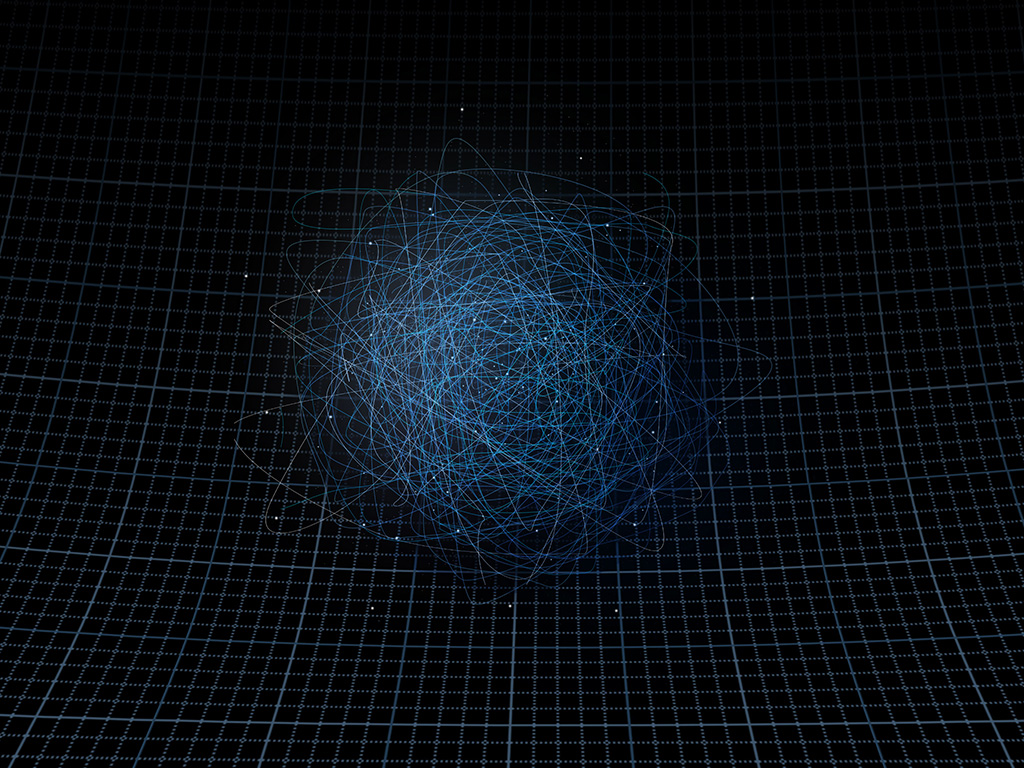Heavy duty: $2.5 million effort will expand knowledge of nuclear matter’s basic ingredients, properties and processes

A Texas A&M University-led consortium has been awarded a five-year, $2.5 million grant from the U.S. Department of Energy (DOE) to support a new Topical Theory Collaboration tasked with developing a theoretical framework for describing the behavior of some of the heaviest particles within a unique form of matter that characterized our universe in its earliest stages.
For more than two decades, Texas A&M physicist Ralf Rapp has been making essential contributions in multiple areas of quantum chromodynamics (QCD), a theory of the strong force that describes how nuclear matter, including a novel form known as quark gluon plasma (QGP), interacts. Within this extremely hot phase of matter, protons and neutrons are dissolved into their elementary building blocks, quarks and gluons, credited with creating more than 98% of the visible mass in the universe. At more than 100 million times the Sun’s surface temperature, the QGP is believed not only to have filled the early universe during the first few microseconds after the Big Bang but also to be present today in the cores of neutron stars.
Rapp now will serve as principal investigator for the Heavy-Flavor Theory (HEFTY) for QCD Matter collaboration, one of five Topical Theory Collaboration projects unveiled last week by the DOE Office of Science as part of an $11.24 million initiative intended to bring together leading U.S. nuclear theorists to collaboratively focus on solving some of the most challenging problems in nuclear physics. In addition to Rapp, HEFTY features 11 co-investigators from nine other institutions: Brookhaven National Laboratory, Duke University, Florida State University, Kent State University, Lawrence Berkeley National Laboratory, Lawrence Livermore National Laboratory, Los Alamos National Laboratory, Massachusetts Institute of Technology and Thomas Jefferson National Accelerator Facility.
“Advances in nuclear physics provide important new insights into the nature of our world as well as novel applications in the areas of national security, energy, health and space exploration,” said Timothy Hallman, Associate Director of Science for Nuclear Physics. “Developing rigorous theoretical frameworks to underpin such advances enables new predictions of nuclear phenomena and a foundation for understanding how knowledge gained can be used to benefit society, such as exploring more clean energy options and new applications in nuclear medicine and industry.”
Rapp, a University Professor in the Texas A&M Department of Physics and Astronomy and a member of the Cyclotron Institute since 2003, is an internationally recognized leader in high energy nuclear physics. He and his research group conduct theoretical studies of matter as it existed in the earliest moments of our universe and how it interacts at high temperatures and densities, based on the fundamental forces and properties of the strongly interacting matter that is formed in heavy-ion collisions.
“Without a doubt, Dr. Rapp is a world-renowned leader in the field of theoretical analysis of quark gluon plasma,” said Grigory Rogachev, professor and department head. “This is a major success for our nuclear theory program, which highlights again the leading role of our faculty on the national and international stage.”
Rapp and many of the world’s elite researchers investigate QGP through theoretical calculations that try to understand the results from major collaborative experiments that collide heavy nuclei at ultra-relativistic energies achievable with the Relativistic Heavy Ion Collider (RHIC) at Brookhaven and the Large Hadron Collider (LHC) at CERN. These modern-day experiments seek to recreate the QGP within laboratory settings, including heavy quarks, or particles containing the heavy charm and bottom quarks, believed to be excellent “Brownian Markers” of the QGP as it was formed in these heavy-ion collisions through the fundamental process of quarks binding together to form composite particles called hadrons.
“Modern-day experiments where atomic nuclei are accelerated and collided at high energies, such as at the RHIC and the LHC, provide the fascinating opportunity to recreate the QGP in the laboratory, 14 billion years after it last existed,” Rapp said. “Future experiments at the Electron Ion Collider in the U.S. will study fundamental aspects of cold nuclear matter, enabling further probes of the fascinating phases of QCD matter in a laboratory setting and expanded insights into our universe, then and now.”
Although QCD as a fundamental theory of the strong nuclear forces is well established, Rapp says the emergence of the properties of QCD matter from its fundamental interactions remains a great challenge in modern research. He notes that the objective of this collaboration is to combine the capabilities of leading U.S. researchers in the field to develop a rigorous and comprehensive theoretical framework to describe heavy flavors in QCD matter, from the initial production of heavy quarks when the nuclei first collide, to their subsequent diffusion through the QGP and their hadronization into heavy-flavor particles.
“The QGP created in the laboratory is very short-lived, and its properties have to be inferred from the thousands of particles that are produced and subsequently measured in large detectors,” Rapp said. “A reliable analysis of heavy-flavor measurements requires a broad knowledge of the various processes that heavy quarks undergo throughout a nuclear collision until their final observation in experiment — a depth and breadth that this team brings to the equation.”

